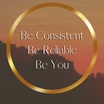Develop Your Strengths

Strategies for Anxiety
Have anxiety related symptoms ever interfered with activities you enjoy? Has anxiety created obstacles when you are pursuing goals? Let’s examine some strategies that may help you manage and reduce anxiety symptoms:
1. What are your triggers? Pay attention to the situations or thoughts that trigger your anxiety. Understanding your triggers can help you develop strategies to recognize them, validate your emotions, then choose a more neutral response to the triggering event, activity, or person.
2. Are you breathing? Deep breathing exercises, progressive muscle relaxation, and mindfulness meditation can help calm your mind and body when you're feeling anxious. These strategies can be practiced anywhere and at any time. (We’ll include a few below.)
3. Put your thoughts “on trial!” Challenge those negative thoughts. Anxiety often stems from negative or irrational thoughts. Challenge these thoughts by questioning their validity and replacing them with more realistic and positive ones. Is it a fact? Is it a feeling? It may feel like a catastrophe yet it may not be a catastrophe. Remember, first validate the emotions that you have. You feel what you feel. If your emotions are not specifically about the current event, take note of it. This may be an historical concern or the cumulative effect of similar circumstances. This process will help you differentiate FACTS from FEELINGS.
4. Stand up and walk. Exercise has been shown to reduce anxiety and improve mood. Engaging in regular physical activity, such as walking, jogging, or yoga, can help alleviate anxiety symptoms. Taking occasional quick breaks to engage in an energy burst can disrupt patterns of mood swings.
5. It is your responsibility to self care. Prioritize your physical and emotional well-being by getting enough sleep, eating a balanced diet, and engaging in activities that bring you satisfaction and help you release stress and negative thoughts and emotions. Make time for your favorite hobby, self-reflection, and activities that help you decompress.
6. Share your thoughts. Talk to a trusted friend, family member, mentor, or counselor about anxiety related thoughts and feelings. Sharing your emotions and concerns can provide relief and help you gain perspective. Consider joining a support group where you can connect with others who may be experiencing similar challenges.
7. Ups and downs of intake. Both caffeine and alcohol can exacerbate anxiety symptoms. Limiting caffeine and alcohol can reduce anxiety symptoms for many people.
8. Create a running list of stress releasers. Take note of activities that tend to help you manage stress. Everyone is different! You may find a range of strategies that correlate with stress reduction such as listening to music, practicing yoga, a brisk walk or jog, dancing, journaling, or creative activities such as painting, writing, or playing music.
9. Set reasonable goals and standards. Reasonable goals and boundaries will help prevent feelings of overwhelm. If you have excessive commitments or responsibilities, aim to prioritize those that are most rewarding and satisfying. Say “no” when necessary and prioritize self-care and relaxation.
A few thoughts on fight or flight and breathing:
When you are anxious, you tend to take shallow breaths. This is part of the fight or fight response that is activated when our brains sense a threat. This response is rooted in our survival instincts. To counteract this and help relax the body, try diaphragmatic breathing, box breathing, or progressive relaxation.
Start by placing one hand on your chest and one on the lower stomach area.
1. Take a deep breath, inhaling through your nose, for four counts.
2. Hold your breath for three counts.
3. Then exhale slowly, through your mouth, for six counts.
Observe the hand over your stomach rise and fall. Deep breathing and exhaling helps to ground you by signaling to the brain that you are safe, and lowering your anxiety level. Repeat this exercise several times and modify your breath counts in accord with what helps you most.
Strategies to Help Regulate Your Emotions:
Humming or Singing. No need to be on key! This strategy can help promote relaxation by way of the vagus nerve. You may notice that the focus on a single note or tone will relax anxiety triggered by stimuli in your thoughts or environment.
Focus on the Tiny Spot. Pick up a pen or other small object and focus solely on that spot. Intermittently allow yourself to be aware of what is in your peripheral vision. Then fully restore your focus on the “tiny spot.”
The Five Senses. Name 5 things you see, 4 things you feel, 3 things you hear, 2 things you smell, and 1 thing you taste.
Release tension through hands and feet. Shake out stored tension by shaking your hands, arms, legs, and feet. Visualize the stressors whisking or flowing away.
Add more of you own calming strategies. There may be different strategies that are more effective at different times throughout your days. Be creative and try to determine what may be the right tool for the job of the moment.
This website uses cookies.
We use cookies to analyze website traffic and optimize your website experience. By accepting our use of cookies, your data will be aggregated with all other user data.
